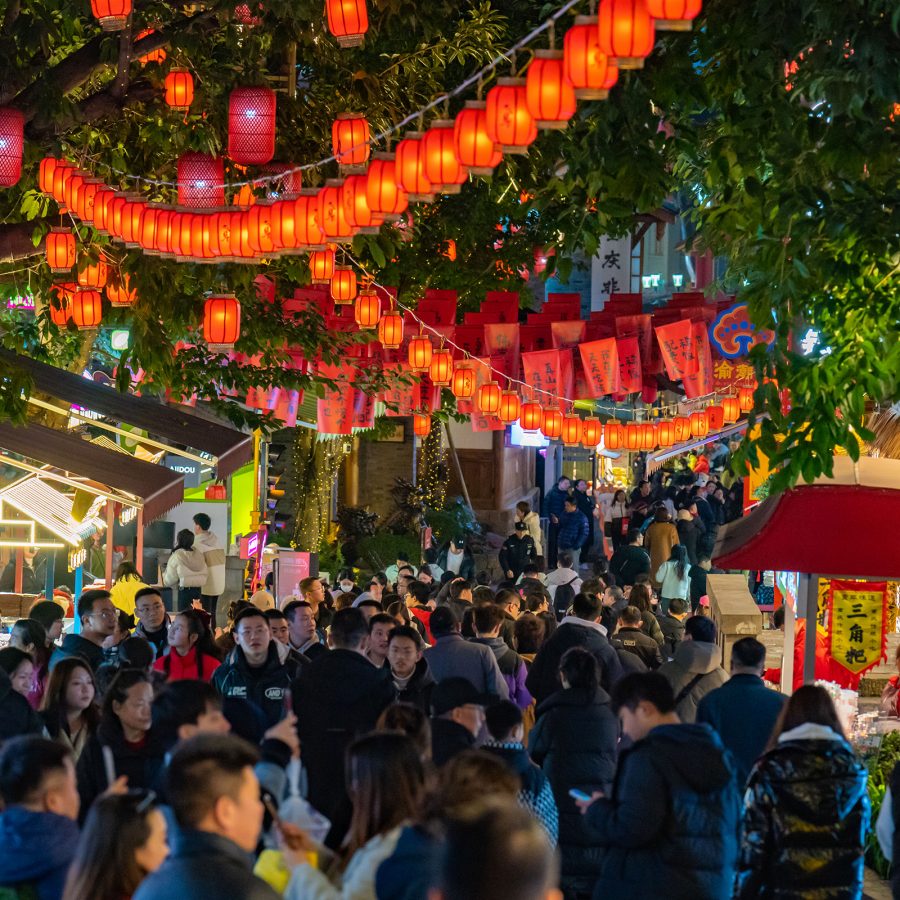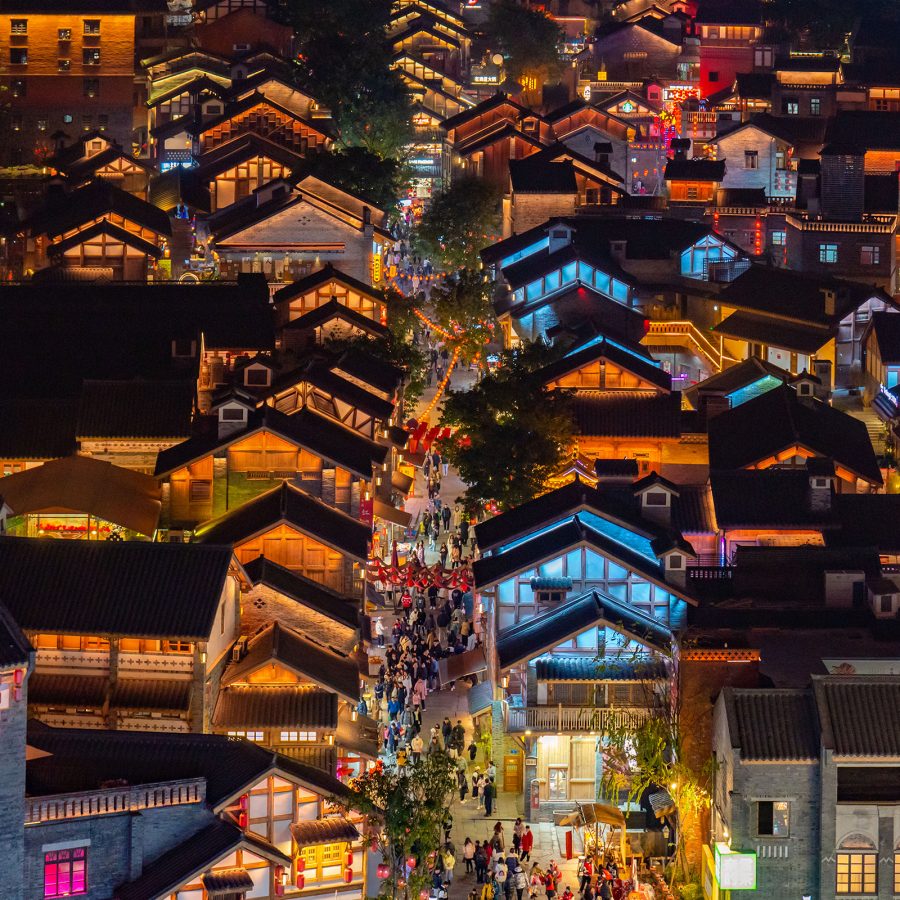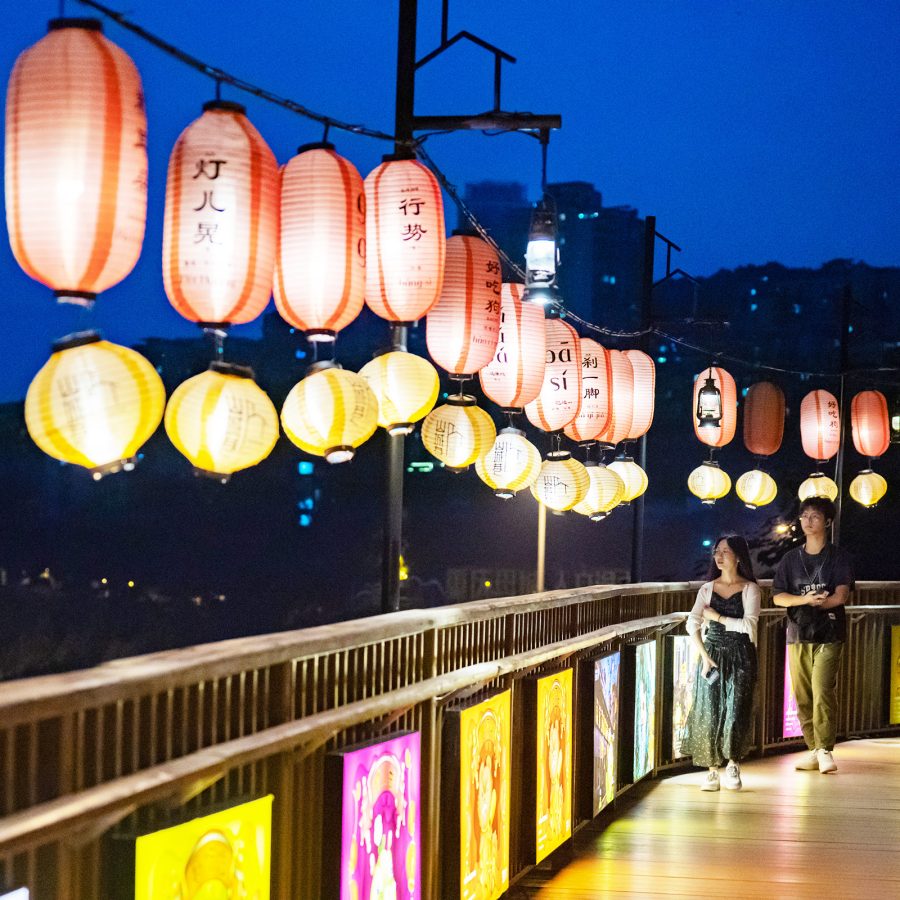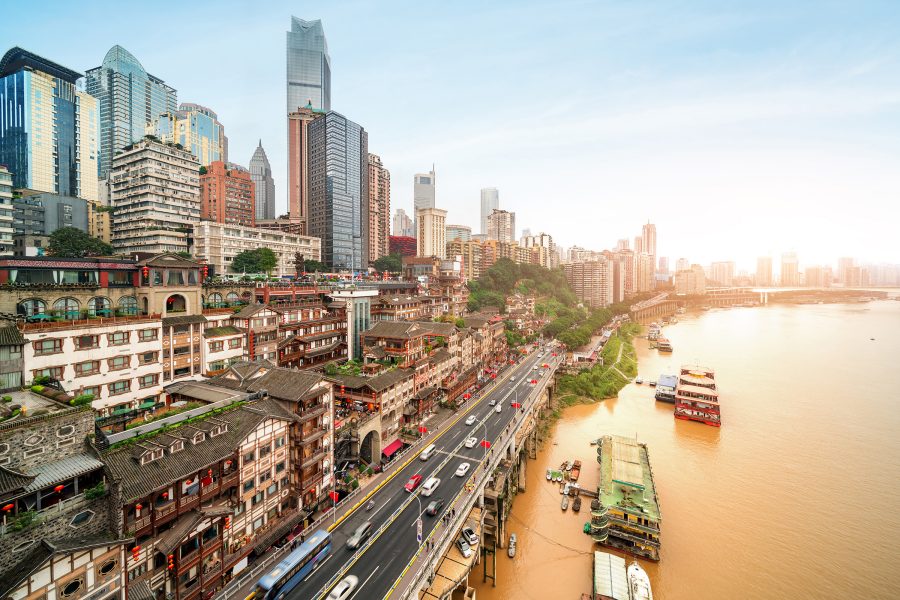Chongqing has seen its appeal soar over the past decade, and no wonder: the southwestern megalopolis in the Chinese Mainland has plenty to offer visitors, from high-end shopping and fiery hot pot restaurants to rugged landscapes and classical Ming and Qing Dynasty architecture.
The city is growing rapidly, but many of its older sites remain highly treasured – especially its winding pathways. These historic hillside trails take in ancient sites and afford sweeping views of the teeming streets and meandering rivers below. Here are three trails worth visiting on your next trip.

Credit: VCG/Getty Images

Credit: VCG/Getty Images
1. The Shibati, or Eighteen Steps
Chongqing is known as China’s Mountain City for a reason; districts are spread across different levels along the steep terrain. During the Ming and Qing dynasties, when flourishing trade caused the city to expand, the Eighteen Steps were built to connect its upper and lower parts. A key pathway for both residents and visiting traders, the steps soon became lined with pavilions and arches built in harmonious arrangement.
Today, the Eighteen Steps is one of the most well-preserved areas in Chongqing’s central Yuzhong District, extending 300 metres from Houci Street in the south to Jiaochang Gate in the north. Many of the original buildings have been renovated or reconstructed as heritage sites, offering a charming glimpse into the past. As you traverse this route, allow plenty of time to take in the traditional architecture and quaint eateries and shops you’ll pass on the way.

Credit: CFOTO/Getty Images

Credit: CFOTO/Getty Images
2. Shancheng Lane
Wandering along Shancheng Lane (Mountain City Lane), located near Nanji Gate in Yuzhong District, is like stepping back in time. As you stroll, admire the church, hospital, bell tower and school, which were all built by French missionaries in the 1900s. Street lamps were also erected, and their resemblance from a distance to floating lanterns gave the alley its former name, Tiandeng Lane (Sky Lantern Lane).
Shancheng Lane stretches 1.7km, from Jiaochang Gate to Tongyuan Gate. As you walk along it, you’ll come across vendors serving up various delicacies – from iron cake, baked flatbread and ice jelly to glutinous rice balls, cured meat sausage and pickled vegetables. The bell tower, now replete with ruined walls, columns and eaves, has been turned into a garden, with trees and wildflowers creating a unique beauty that transcends time and space. When you need a break, it’s the perfect spot to sit and watch the great Yangtze River endlessly roll by.
3. Zengjiayan Cliffside Path
Starting at Jiadong Village, Zengjiayan Cliffside Path cuts through the heart of Yuzhong District and its many landmarks, including the Chongqing Municipal Committee of the Communist Party of China – the “brain” that led Chongqing's 80-year urban transformation. Prominent figures of state like Zhou Enlai and Xian Ying have also called the neighbourhood home, along with cultural figures including Guo Moruo, Lao She and Xu Beihong.
Keep walking along the 1.8km Zengjiayan Cliffside Path and you’ll encounter more heritage sites, including the house-turned museum Teyuan, and charming Guiyuan Gardens. You’ll also pass dense Chinese banyan tree roots nestled in the crevices of the hillside; their lush branches and leaves allow the homes on this slope to be shrouded in patches of verdant greenery.
Travel tip: as you explore this area, it’s worth making a detour to Zhongshan Fourth Road, frequently hailed as Chongqing's most beautiful street and featured in the 2019 film Better Days. The road is also home to hidden gem restaurant Xiyangyang, which has been serving delicious and affordable food for more than 20 years.
Recommended dishes include millet steamed pork ribs, sesame sauce lettuce, and sweet and sour pork.
More inspiration
Chongqing travel information
- China – the Chinese Mainland, Hong Kong SAR, Macao SAR and Taiwan Region
- Hong Kong SAR - English
- Chinese Mainland (China) - English
- Taiwan, China - English
- 香港特別行政區 - 繁體中文
- 中国內地 - 简体中文
- 中國台灣 - 繁體中文
- Africa
- South Africa - English
- Asia
- Bangladesh - English
- Korea - English
- Singapore - English
- Cambodia - English
- 한국 - 한국어
- Sri Lanka - English
- India - English
- Malaysia - English
- Thailand - English
- Indonesia - English
- Maldives - English
- ประเทศไทย - ภาษาไทย
- Indonesia - Bahasa Indonesia
- Myanmar - English
- Vietnam - English
- Japan - English
- Nepal - English
- Việt Nam - tiếng Việt
- 日本 - 日本語
- Philippines - English
- Australasia
- Australia - English
- New Zealand - English








